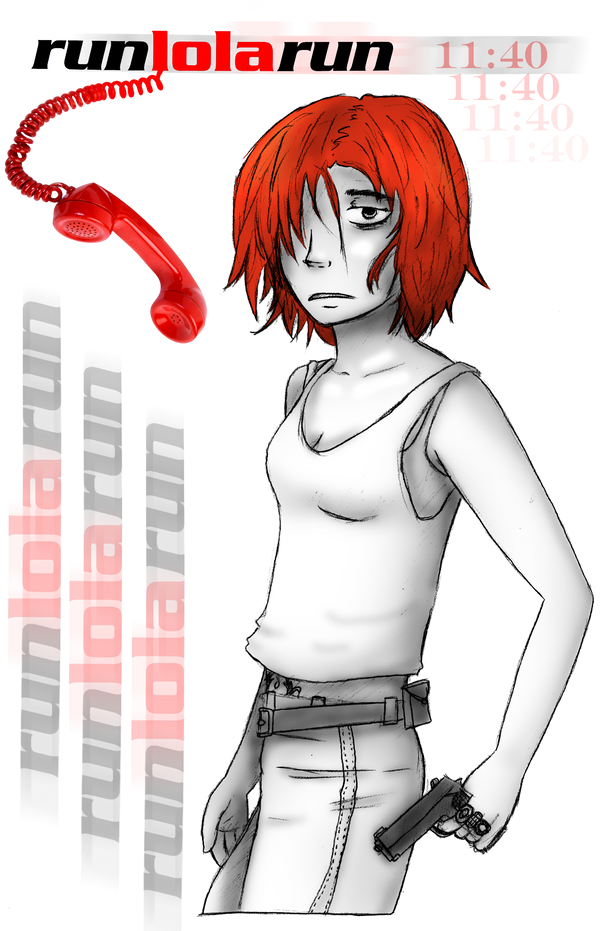“Life just isn't like the movies is it? We're constantly led to believe in resolution in the establishment of the ideal status qua, and it's just not true. Happy endings are a myth. Designed to make us feel better about the fact that life is just another thankless struggle.”
Spaced is a fantastic show. It is sort of like the British equivalent of the Big Bang Theory if you use Douglas Adams logic as if it is like the other show in the sense that they are entirely different. Both shows are about for lack of a better term—nerds. The difference being that Spaced is more focused on the “slacker-nerd” group more common in the late 90’s. I like Spaced a hell of a lot better and it has little to do with the fact that I think Simon Pegg is fucking awesome. Spaced\was the first time that Pegg, Frost, and Wright worked together. Most of you are probably more aware of their first film, Shaun of the Dead.
I also like Spaced better than BBT because I like the references more. Spaced mostly references great films first and foremost. The rest of the references are from video games, some comics, and a few TV references.
Firstly, I highly recommend, if you like Simon Pegg’s work and would like to learn more about him, to read his recently published book Nerd Do Well. It goes into his life as well as his career in more detail than I will. I will add some facts that I learned from his book but if you really want to know everything about all his work, read the book. It is an easy read and entertaining
Before doing Spaced, Pegg had done a few sketch shows such as Big Train, which is almost like a more modern Monty Python’s Flying Circus. He also worked with Edgar Wright and Nick Frost before. The three of them are an unbeatable team who has made three fantastic and flawless films together so far.
Jessica Hynes (Jessica Stevenson) is also a wonderful actor—she like the others, is really dedicated.
Spaced was written by Peg and Hynes who also star as Tim and Daisy who are essentially based off Pegg and Hynes. Pegg’s Character Tim Bisley is a reference to a comic book artist whose name is Simon Bisley. Tim is also a graphic artist and since Simon Pegg plays Tim Bisley, it is also a pun and a reference.
There is just something about Spaced that makes me happy every time I watch it. Maybe it is the nerd in me.
The other characters along with Tim and Daisy have something to do with it. The acting on all accounts is superb and the characters are fully fleshed out.
Nick Frost’s character ‘Mike’ is based off a character idea that he always had.
Martha’s character is based off the voice of the actor’s old landlord and off this drunk woman she met in Greece. Martha is just great
The character of Brian and Tyres I can easily sum up with clips from YouTube.
Tyres: http://www.youtube.com/watch?v=Y54jev1Uyao&feature=fvst
Also, let’s not forget about one of many people’s other favorite characters, Colin. Colin is the miniature-schnauzer owned by Tim and Daisy, played by the dog, Aida. Pegg loved Aida so much that he now has a miniature-schnauzer of his own called Minni.
The show also has a great feel to it. Though it is essentially a comedy, like real life it does have serious and down moments to it. And even though it is a comedy I would not call it a sitcom like Big Bang Theory is. First off, Spaced has no audience laugh tracks. Secondly, since it is filmed in Britain, it is not censored.
The show has a great soundtrack bringing in pieces from everywhere that perfectly fit the tone of each scene and the same goes for the sound effects.
Edgar Wright is a brilliant director and like so many great director’s, he is a perfectionist. Pegg and Wright are a great team and Frost adds more greatness to them. The cinematography is Spaced is amazing as well—Wright knows what we wants out of a shot.
Also, there is a character that appears in only one episode who, for those of you who enjoy British comedy might recognize, Vulva is played by David Walliams who later will go on to do Little Britain
Most of Pegg’s fellow actors are usually in several of his films along with him—even in the films that Wright and Frost do not do with Pegg, (they always work together when Pegg has a story in mind), and you will see people from Spaced and previous films. Also almost all of them have appeared on Doctor Who including the actors who play Shaun’s parents.
Overall, Spaced is a fantastic work of art that all nerds, geeks, and dorks will enjoy as well as cinemaphiles. I highly recommend it with a 5 out of 5 rating.
Check out the DVD documentary Skip to the End to find out where Tim and Daisy are now.

